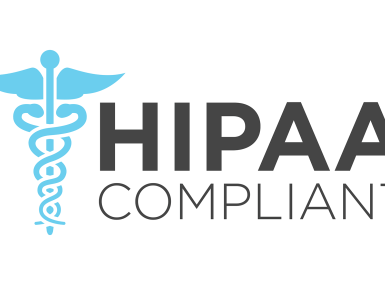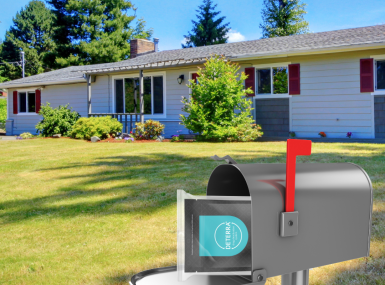Why customer-centric strategy is vital for digital service adoption
Upcoming Events
Related News

Key Takeaways
From Our Partners
This post is sponsored by our partners at Granicus.
The world runs on digital platforms, and users expect a seamless customer experience whether they purchase from a major online retailer, initiate an online financial transaction, or conduct business with the local county government. County governments must exceed these constituent expectations.
Customer Experience (CX) has become a driving force in digital communications. As more people conduct their daily business through digital channels—whether on a computer, tablet, or mobile device—providing a digital presence alone is no longer sufficient. Successful interactions with customers require thoughtful strategy and attention to human-centered design, creating positive digital experiences.
Over the last few years, the trend toward improved CX has crossed the divide between private and public sectors. While the "C" in "CX" may shift to mean "constituent," the demands are clear: Government must be held accountable for designing and delivering services with a focus on the actual experience of the people it serves. Government must also deliver services more equitably and effectively, especially for those historically underserved.
Government administrations at every level are being pushed to improve CX. These mandates put the onus on county governments to consistently evaluate and improve their digital tools for service adoption and program enrollment, focusing on the user experience.
A recent webinar featuring digital analysts Charlotte Lee and Nick Geier examined this shift's impact on government work at every level, meeting new demands while maintaining and improving service delivery and experiences. Based on their work with government clients through the Granicus Experience Group (GXG), Lee and Geier presented insights and discussed crucial questions counties should consider when building new digital strategies around service adoption.
A Strategy for Long-Term Transformation
"Government has started to mature their understanding of customer experience and examine previously unexplored concepts around the role communications plays in CX," Geier said during the presentation.
Lee added that many government programs still grapple with what they aim to achieve by transforming their services digitally. Success in service adoption, she noted, should remove barriers and enable seamless, omni-channel experiences for the customer. For many governments, this may be easier said than done.
"The right technology is critical, but so is a long-term strategy and an agile culture," she said.
When considering a new strategy toward digital services, county governments should establish these cornerstone concepts:
Goals
Determine what success looks like and align on a measurement plan. These goals should support overall county goals and objectives and will inform the types and categories of content to be prioritized at different program phases.
Audience
Establishing clear personas and audience segments reflecting needs, motivations, goals, and pain points will better understand audiences and inform content creation to meet their needs.
Journey
Getting audiences to reach intended goals requires multiple channels or touchpoints for the best success. Outlining key questions and actions an audience member might take while interacting with county government—guided by the goals and pain points created in audience segmentation—helps address potential barriers to success.
Content
The content received by audience members at each journey step is critical to removing barriers that reduce program enrollment and service adoption. With clearly defined goals and an understanding of the audience, developing content that meets their needs and drives positive actions becomes easier.
More Than Providing Services, Building Relationships
The relationship between county and user, though complex, has the same desired outcome: a county looking to provide services and a user looking to adopt and use those services.
However, the first step, the enrollment process, is often a critical barrier. Successful account creation marks the beginning of the customer’s journey and is a metric of success. The user’s experience during this initial process is often overlooked in digital service adoption strategies.
With a multi-channel, guided experience, counties can provide content that addresses issues and concerns users may have with the enrollment process and help build a positive relationship with the county, establishing expectations for future user interactions.
"Users have a phased, not linear, tendency when it comes to changing their comfort level," said Geier. "Familiarity can be achieved with clear and transparent communication through the consideration process. But iteration is key to creating successful change."
Trust and communication are important pillars in this process, but process transparency also plays a significant role. When planning a strategy to address new program enrollment, common questions to ask include:
- What components are necessary to ensure change is not painful?
- What might be some barriers to trust in the digital adoption process?
- What might happen if government services do not instill trust?
While these questions may not directly impact how a digital experience is created, developing and executing strategies through a lens that considers these issues will help build experiences that bear the relationship with the user in mind—as well as the concerns they bring to the process.
Content Interactions That Increase Engagement
The concept of user engagement, a high priority in the private sector, contrasts with public sector programs, which may focus more on "hard" metrics like total enrollment. To create better digital programs for service adoption or program enrollment, lessons and tactics from the private sector can provide insights.
In all steps of enrollment service adoption, multi-channel communication strategies can create engagement that fosters a greater likelihood of success. These strategies can:
Increase Trust of Service Delivery
Ongoing audience engagement through two-way SMS, email, and surveys provides a direct path to the target audience. This approach also aids in collecting feedback and insights to inform future services.
Manage Expectations
Proactive status updates on claims or application processes with personalized, action-triggered messaging help alleviate call center volume. Furthermore, government-initiated communications build trust as opposed to being seen as impersonal.
Drive Service Adoption
Targeted messaging based on need-, demographic-, and behavior-based categories increases the likelihood of action.
However, Geier emphasized that opt-in subscriber data collection is crucial.
"Opt-in is not an option," he said. "Better data leads to better experiences and helps move from a singular customer service approach to one that takes an interdepartmental view to meet customer needs with a positive digital experience."
A Shift in Philosophy, Not Just Services
The core changes in a successful CX evolution reflect a broader shift in how government adopts techniques the private sector has used in the growth of digital tools.
Sending personalized and relevant messages about happenings, ideas, and events with the goal of increasing engagement and meeting strategic objectives may seem secondary to government services. However, improved customer relationships and developed brand presence will continue to grow in importance for agencies targeting increased adoption, customer advocacy, and mission impact.
Learn more about how a platform of digital engagement tools can help county governments embrace a digital shift and increase strategic success.
Post Sponsor

Related News

Counties and Railroads: Shared Priorities for the Next Surface Transportation Bill
County leaders from across the country have a vital opportunity to ensure their infrastructure priorities are front and center.

Unlocking AI Starts With Strong Data Governance
Strong data governance is the foundation of trustworthy AI in government. When Agencies inventory, clean, unify and steward their data, they unlock better decisions, improved services and stronger public trust.





















